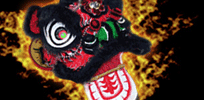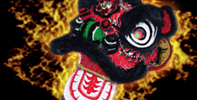

|

|
Welcome! |
 Sunday, November 23
Sunday, November 23 |
| WHAT'S HOT |
|
One Week Free Classes & Free Uniform |
| SITE OPTIONS |
 Site Intro Site Intro Guest Book Guest Book Contact Us Contact Us Mailing List Mailing List |
| QUICK LINKS |
 Testimonials Testimonials Coupons Coupons School Location School Location Class Schedule Class Schedule Tien Shan Pai Curriculum Tien Shan Pai Curriculum Wing Chun Curriculum Wing Chun Curriculum Tai Chi Chuan Curriculum Tai Chi Chuan Curriculum Seminars Seminars Event Calendar Event Calendar News News Articles Articles Photo Gallery Photo Gallery Products Products Chinese Terminology Chinese Terminology FAQ FAQ |
| SCHOOL SEARCH |

|
| Home -> Classes -> Northern Kung Fu -> Tien Shan Pai Kung Fu | ||
|
|
||
Tien Shan Pai Kung Fu
Tien Shan Pai employs both Long & Short range techniques adaptable to a variety of situations. This style incorporates several systems such as Northern Style kung-fu, Bai Chi Chuan, Tai Chi Chuan, Hsing Yi and Ba gua. Tien Shan Pai System employs both High kicks, Low sweeps and a great balance and coordination of hand and foot combination. The Power is generated from the entire body. This system incorporates numerous weapons sets including Broad-Sword, Staff, Hook Swords, Straight Sword, Spear and many more... There are Single empty hand sets (forms) as well as Two-Man empty hand Forms in addition to Single & Two-Man Weapon sets as well. Tien Shan Pai will give you a good balance of external (kung fu) and internal (tai-chi, etc) styles of martial arts. As a very comprehensive school of martial arts instruction, T'ien Shan Pai interweaves diverse, sometimes antithetical qualities into an action process of total harmony and effectiveness. As such, the school reflects the complementary flux of Yin and Yang. Tien Shan Pai students have developed a reputation for excellence and compete successfully in full contact fighting, forms and weapons competitions in national, major international and world tournaments. Yin and YangAn understanding of the Chinese martial arts in general and T'ien Shan Pai in particular hinges on an understanding of the theory of Yin and Yang. As presented in the Confucian Book of Changes (I Ching), Yin, the negative or passive forces in the universe, and Yang, the positive or active forces, interact in complementary fashion, yielding and unyielding, giving and taking, darkness and light. The flux resulting from this interaction of contrasting, antithetical forces creates the total symmetry and harmony of the universe. When applied to the martial arts, the theory of Yin and Yang manifests itself in certain principles of movement (Yin signifying soft, internal qualities, Yang signifying hard, external ones) and may be used to denote specific techniques within a style or an entire school itself, depending on the predominance of hard or soft, internal or external. Hardness and SoftnessThe combination of hard and soft movements in T'ien Shan Pai helps create the flux of Yin and Yang. Although it is difficult to instantly distinguish hard movements from soft ones, T'ien Shan Pai instructions use this example to clarify the matter: An adversary launches an attack of powerful, aggressive strikes, which the fighter deflects, diverts or redirects. With his opponent's balance thus upset, the fighter strikes his adversary's vulnerable areas. The fighter's methods of deflecting, diverting or redirecting his adversary's blows manifest softness (Yin) while the powerful aggressive techniques used for inflicting strikes embody hardness (Yang). The flow from hardness to softness (Yin and Yang) and vice versa facilitates flexibility, adaptability, and instills in the fighter the ability to deal harmoniously with any given combat situation. Internal and ExternalYin and Yang are also manifested in the internal and external of Yin and Yang aspects of T'ien Shan Pai. Strong overt action, prompt attack and swift counterattack characterize external systems (yang). Internal systems (yin), on the other hand, utilize a keen sense of balance and weight shifting, the imperturbable flow of ch'i (energy), concerted breathing, sidetracking and subtle maneuvers. The Tien Shan P'ai fighter combines these elements, alternating internal and external to suit his purposes, and sometimes taking techniques from both and using them simultaneously. For the most part, however, the flow from one to the other and back, the complementary incorporation of both, reinforce the underlying notion of Yin and Yang and help create an efficient fighter. Long and Short ReachAlthough it teaches both "long-reach" and "short-reach" forms of boxing, T'ien Shan Pai stresses the use of long-reach techniques. Short-reach techniques, to retain sharper control and swifter power, utilize tight, narrow blocks, strikes and kicks in close approaches to the target. The T'ien Shan Pai fighter, using long-range movements, however, favors blocks, strikes and kicks executed at full-arm or full-leg extension. Long-reach practice is based on the principle that a strike is strongest when released at full length and a block, using a fully extended arm, provides the greatest advantage, especially when countering a hit executed with a bent or half-extended limb. In addition, a boxer using long-reach movements secures more time and opportunity for striking and adjusting his strikes than an opponent limited by short-arm or short leg assaults. Most importantly, mastering long-reach techniques encompasses learning short-reach movements as the former is built on the latter. However, the converse is not necessarily true. Studying only short-reach techniques imposes a restriction on what might be learned beyond that because it does not include wider ranging executions Feint and StrikeDuring a challenge, the T'ien Shan Pai student always remembers "One, Two, Three." "One" signifies a feint by the student. "Two" counts out an assessment of his opponent's skill, strength and intelligence based on his response to the feint, and at "Three" the student uses this assessment to deliver a well-timed, well executed blow. In running through the "One, Two, Three" count, the T'IEN SHAN PAI student actualizes the interplay of Yin and Yang, soft and hard, internal and external, moving from the Yin of the feint to the Yang of the strike. Angular StrikeT'ien Shan Pai teaches its students to strike from an angle rather than to attack directly from a frontal position. An attack from the side insures greater leverage and enables the fighter to move easily into other positions of advantage while simultaneously inconveniencing his adversary. Circular MovementIn conjunction with striking an opponent from an angle, T'ien Shan Pai stresses movement in a circular pattern. Circular movement not only facilitates angular striking but it generates more power than a straightforward charge. A pattern of circumvention commands a wider area than approaching the opponent directly on a straight line.
|
|
|
Visited 16300 Times Since 03/27/07 | Last Modified 11/20/2025 |
|
|
|
 |
Northern Shaolin Kung Fu and Tai Chi Academy 619 South Trooper Rd, Audubon, PA 19403 Copyright © 2025 610.631.9200 |


